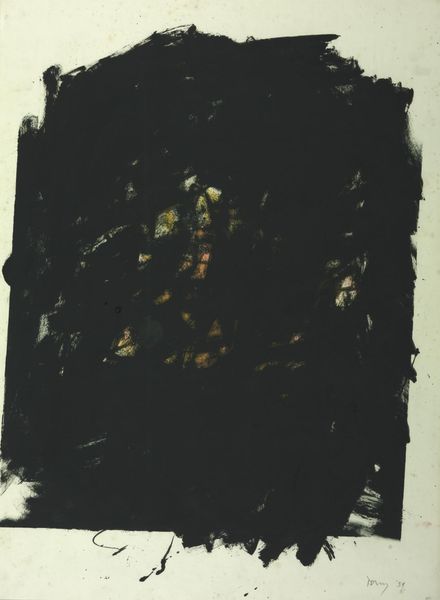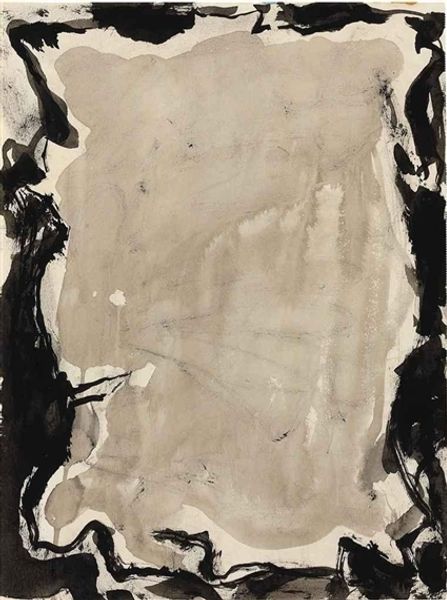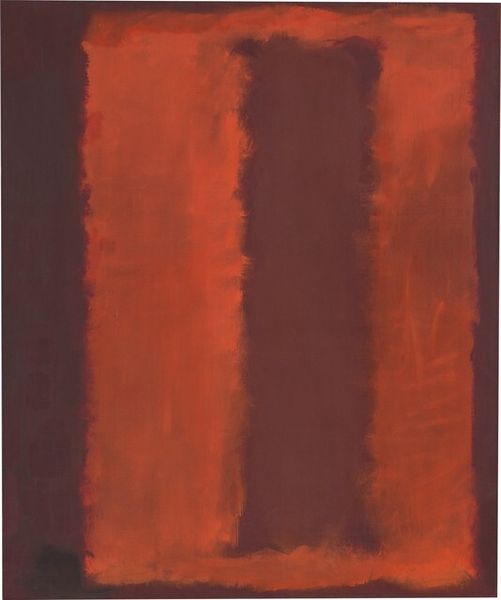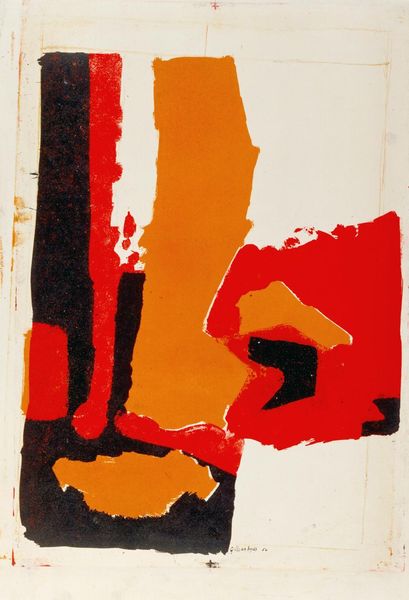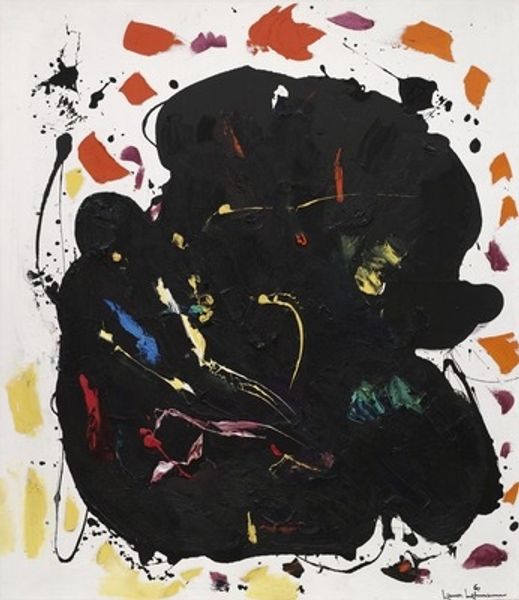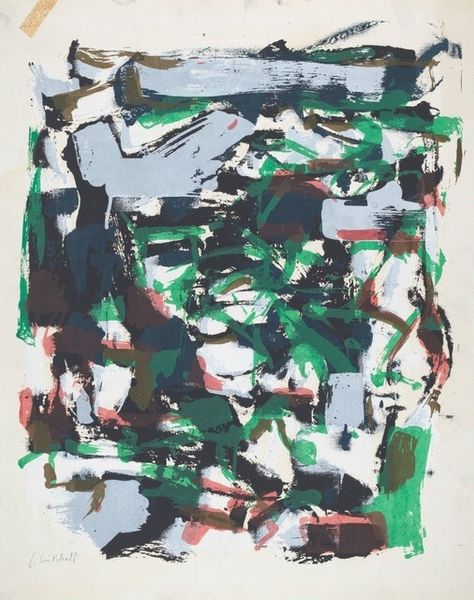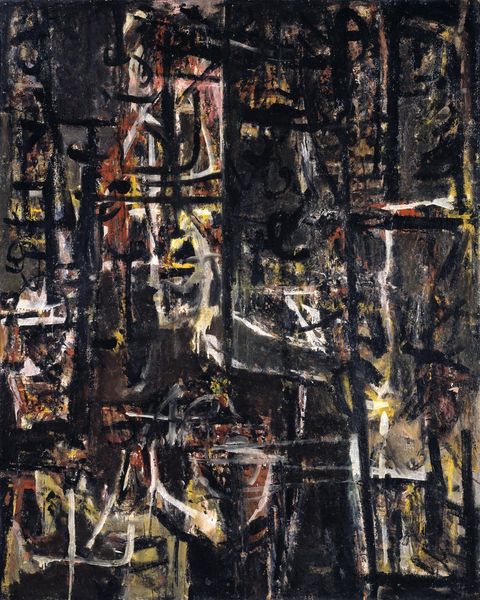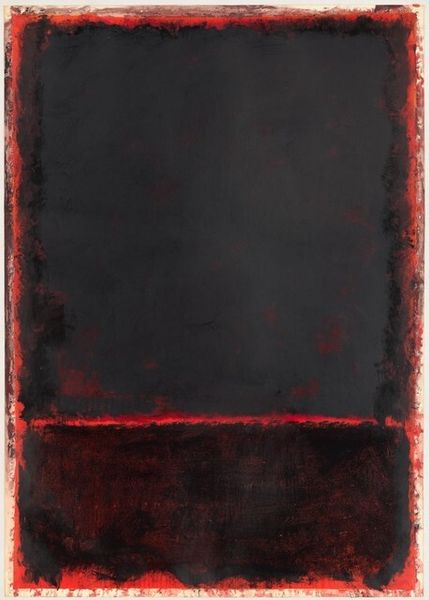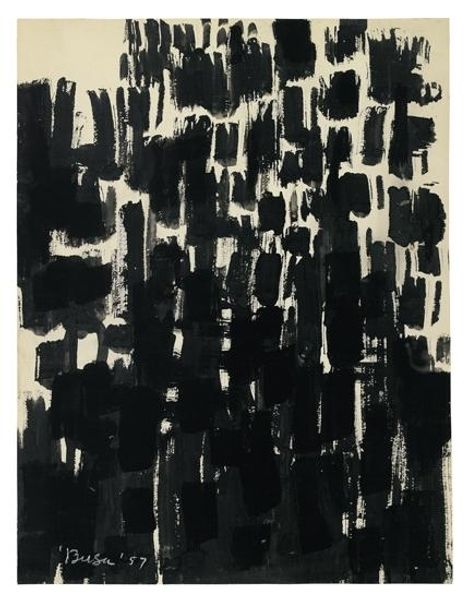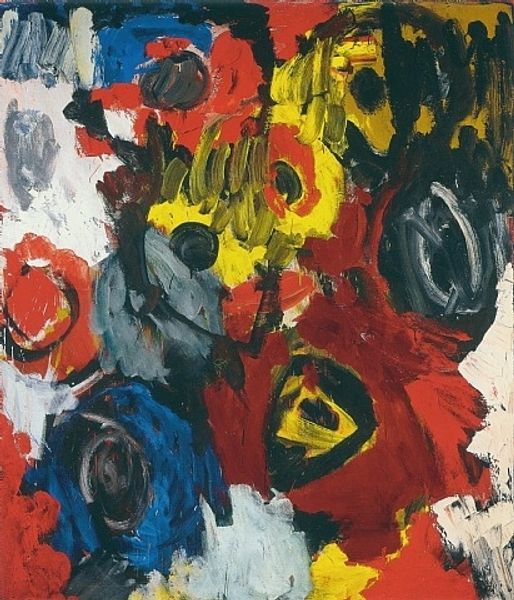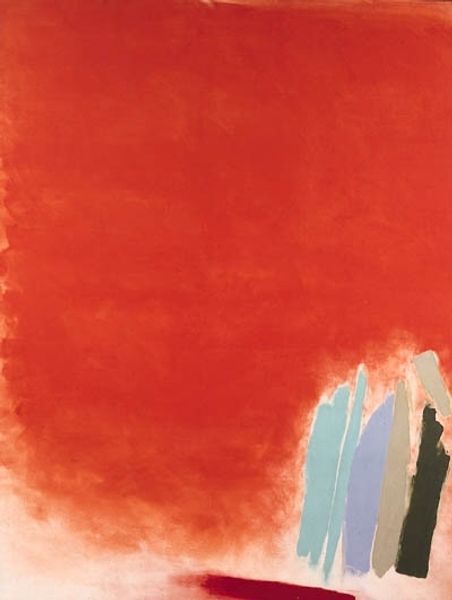
matter-painting, oil-paint
#
abstract-expressionism
#
abstract expressionism
#
matter-painting
#
oil-paint
#
acrylic on canvas
#
abstraction
#
abstract art
#
modernism
Dimensions: 236.2 x 200.7 cm
Copyright: Clyfford Still,Fair Use
Editor: Here we have Clyfford Still’s “1949-A-No.1,” an oil on canvas piece created in 1949. It strikes me as incredibly raw, almost violent in its composition. The sharp contrast between the colors creates a really intense viewing experience. What formal elements do you find most compelling? Curator: The power of this painting, in my view, resides in its calculated disruptions of surface. Observe how Still orchestrates a dialogue between color planes. The black, ostensibly the dominant form, is constantly being challenged and disrupted by the chromatic intensity surrounding it, undermining any sense of stable figure-ground relationships. Notice, as well, the impasto; the varying textures contribute significantly. Are you registering the dynamism produced? Editor: I am. The impasto gives it such a tangible, almost sculptural quality, as though the painting is reaching out. The color fields definitely compete. The burgundy almost feels like it’s ‘tearing’ at the edges of the black, rather than sitting behind it. I can see that you are suggesting it's about pure form, even combative. But, does Still intend to convey meaning through form alone, eschewing narrative or symbolism altogether? Curator: Exactly. Consider how the vertical thrust bisecting the composition functions. It refuses any comfortable reading as a representational element, existing solely as a formal device to further fracture the spatial logic. Meaning resides precisely in this tension—between surface and depth, opacity and luminosity. Through the push and pull of these visual forces, we encounter the very essence of painting. Editor: So it’s less about ‘what’ it is and more about ‘how’ it is? I see now how focusing solely on form can unlock its complexities and intensity, independent of outside influence or interpretation. Curator: Precisely. That's the joy of a purely formal analysis. The artwork is allowed to be exactly what it is, a masterclass in visual components. Editor: Fascinating, I've gained a greater appreciation for abstract expressionism!
Comments
No comments
Be the first to comment and join the conversation on the ultimate creative platform.



